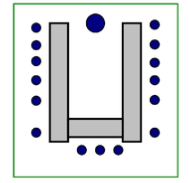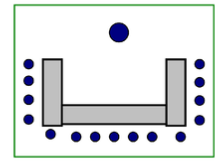



























- These tips have been prepared to provide help and guidance to those new to training and presentation. They will help you to provide effective and consistent delivery. It is assumed that you will be using PowerPoint along with video and a flipchart or interactive whiteboard of some kind.
- It is important that you are familiar with the training materials to be used.
- These tips are for general guidance only and training needs and training facilities vary considerably. For example, the training room may be little more than an old shed in the middle of a public park, with virtually no training aids or it may be in a new building with a dedicated training room and the latest facilities.
- At every stage, the trainer is encouraged to add and highlight preferences and draw on previous experiences to enhance the presentation of the training.
- The overall aim is to instigate change.
- Remember training is about “what we want people to do differently” after the event - not what they thought most interesting or just informative.
Study your training materials thoroughly - if videos are to be shown, watch them to ensure they are appropriate and that you are aware of the content. Think about how you can integrate them into the course in a meaningful way. Consider the learning points that you wish to highlight and anticipate any questions that may result from the screening. Check your PowerPoint presentation and read any background notes carefully.
Note the video’s running time and identify any places where you may wish to pause to add comments i.e. additional information, personal experiences or recent examples relating to your company activities and environmental aspects.
Having studied the material it is recommended that you prepare your own “script” which you will need to refer to throughout the event, noting syndicates and their time management, breaks and most importantly the course objectives.
Highlight points in your script where you may need to stress key learning points or quote work related examples, particularly ones relevant to your current audience.
Consider the audience. Be sure you have a complete list of the participants including first names, job titles/roles within the business, department and any additional information which may help you prepare syndicate groups.
Rehearse the presentation beforehand, preferably with a colleague ensuring that you feel comfortable with the material and the format
Anticipate questions and prepare answers. You may prefer to keep reference sources to hand.
Check each position to make sure there is a clear view of the screen and any other visual aids.
The room should be well lit but without direct lighting onto the screen.
You may have to dim the lights for your PowerPoint or video presentation depending on the brightness of the projector. Try sitting at the back of the room. Will all the slides be visible in the ambient light of the room? Will the sun be shining through during your performance? If necessary close curtains or adjust blinds.
Can you hear the audio from the video?
The temperature should be “comfortable” and distractions should be avoided where possible. Consider the best way to avoid or cope with interruptions: pagers, mobile phones, external noise and activities.


Horseshoes

Cabaret

Armchair
Remember the ABC of training - “Always Be Comfortable”
It is important to consider how people learn if you are to make your delivery effective. Think about how you can help people to do things differently after the event and change their behaviour to improve overall performance. Some people learn from interacting with and questioning others, some prefer visual information, some learn better by listening.
If we are to make our training events effective, we do need to cater for these learning preferences. This means you should design your course so that it includes visual aids that have meaning – that help to explain, describe and clarify and not just provide a pretty picture that adds a wallpaper background to your presentation. Consider how you use your voice – your tone, stress, pitch and the use of pauses. These can influence your audience far more than the words alone. Video of course adds action, as well as words and music to the event and should be used where appropriate as it delivers to both the auditory and visual channels simultaneously.
In addition don’t forget the power of the group learning experience and to include role-play and team exercises in the programme wherever there is time and opportunity.
Different seating arrangements suit differently shaped rooms, so choose the seating plan which will be most appropriate to the venue and the size and nature of the group of people who will be attending.
Three styles of layout are suggested - “horseshoe”, “cabaret” or “armchair”.
Tips for new trainers



| Pollution Prevention |
| Waste |
| Awareness |
| Resource Efficiency |
| H&S, Energy and Other |
| Browse by Category |
| Browse by Cover |
| Directors Comments A Way With Waste |
| Director's comments |
| Presentation tips for new trainers |
| Green Training Views |
| Irony gets a hat |
| Why Use Video? |
| Unofficial Laws |
| ALL ARTICLES |
| Directors Comments |
| Scrapbook |
| Your Training Objectives |
| Training and Communications |
| Beware the price |
| Briefing |
| Pitfalls |
| Production Experience |
| CONTACT |